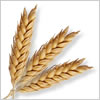Your cart

 USA: Barley acres estimated to drop sharply this year
USA: Barley acres estimated to drop sharply this year
In early March, when the U.S. Department of Agriculture asked farmers across the country what crops they planned to put into the ground in 2024, their collective reply was fewer acres of corn and more acres of soybeans and wheat than last year, Agweek reported on April 15.
That information came out in the agency's Prospective Plantings report, released March 28. But farmers and other stakeholders in agricultural crop production should keep in mind that the report, which used to be called “planted intentions,” is just that, said Frayne Olson, North Dakota State University Extension economist and crops marketing specialist.
The USDA National Agricultural Statistics Service bases the acreage estimates on a survey of about 72,000 farmers from across the United States during the first two weeks in March. The information is collected by mail, internet and telephone.
Factors, such as market prices and weather conditions, could result in changes in planting plans between the time the survey was conducted and when they start seeding their crops, Olson said.
“We’re asking farmers early in the season, 'Given what we see today, what are your thoughts?'” he said.
Planting was just getting started in early April in the northern Plains when the USDA released its second weekly Crop Progress report of the season on April 8, reflecting conditions the day prior. Corn, in the 18 main corn producing states, and spring wheat, in the six main spring wheat states, were 3% planted respectively, close to average for both. Barley was 5% planted in the five main barley states, right on average. Oats already were 34% planted in the nine main oats states, ahead of the 28% five year-average.
But for all that progress, few seeds were in the ground in the northern states, with Minnesota, North Dakota, Iowa and South Dakota reporting no corn planting progress. North Dakota showed no planting progress for any crop as of April 7, while other states in the region had at least small amounts of planting started for certain crops. That's about normal for this time of year. And it shows why plans can change from that early season USDA report.
It’s possible, for example, that farmers could end up planting more corn in 2024 than the acreage report estimated, Olson said.
“I do caution that last year we had an early spring planting season, and planting went smoothly and quickly, and farmers ended up planting more corn than expected,” he said.
In 2023, USDA estimated corn acreage at 92 million, 4% more than 2022. However, farmers planted 94.1 million acres of corn in 2023, which was a 6% increase over 2022.
Total U.S. 2024 corn acres are expected to drop by 5% from 2023 to 90.3 million acres in 2024, the report said.
The shifting of acreage from states that are primary producers of the crop to a state that typically isn’t a large producer of the commodity also can result in a difference between what market watchers were expecting and USDA estimates.
For example, market watchers expected 2024 U.S. spring wheat acres to be lower than last year, but while acres in North Dakota, the country's largest spring wheat producer, are expected to drop from 5.6 million last year to 5.3 million this year, Minnesota are forecast to rise by 23% to 1.6 million. Total U.S. spring wheat acres are estimated at 11.2 million, an increase of 1%, USDA said.
“North Dakota was down, Minnesota was up, and overall acres were up,” Olson said.
The USDA pegged 2024 U.S. soybean acreage at 86.5 million, 3% more than farmers planted the previous year. Though soybean acreage is expected to remain steady in 24 of the 29 states that grow the crop, soybean acreage is forecast to rise in northern Plains states. The report put North Dakota soybean acreage at 6.9 million — an 11% increase over 2023.
Although South Dakota soybean acreage is not predicted to rise by as much as North Dakota, it could be significant — an increase of 200,000 from 2023 to 5.3 million acres this year, report said. In Minnesota, 2024 soybean acreage is estimated to increase by 100,000 acres over last year, to 7.5 million acres.
While USDA estimates wheat acres will increase this year, barley acres are estimated to drop sharply, from 3.2 million last year to 2.6 million this year. Acreage in Montana, the country's largest barley state, is expected to decrease by 20% from last year to 500,000. Acres in North Dakota are estimated to drop by 32% to 470,000 and Minnesota acreages are expected to drop by 8% to 55,000.
The decline in barley acreage was expected because some malting and brewing companies either didn’t offer contracts in 2024 or reduced the amount of acres farmers could contract. The companies don’t need malting barley because they have a robust supply on hand from the 2022 and 2023 crops.
The reduction in 2024 barley acreage is similar to several years ago when farmers planted less acres because of high production the previous year, Olson said.
“A couple of years with big yields and high quality back up in supply. If there’s a couple of short years it could go the other way,” he said.
Regresar
E-malt.com, la fuente de información global para los profesionales de la industria cervecera y de malteado. Los boletines quincenales de E-malt.com incluyen las últimas noticias de la industria, estadísticas en gráficos y tablas, precios mundiales de cebada y malta, y otra información relevante. Haga clic aquí para obtener acceso completo a E-malt.com. Si usted es un cliente de Castle Malting, puede obtener acceso gratuito al sitio web y publicaciones de E-malt.com. Contáctenos para obtener más información en marketing@castlemalting.com.





